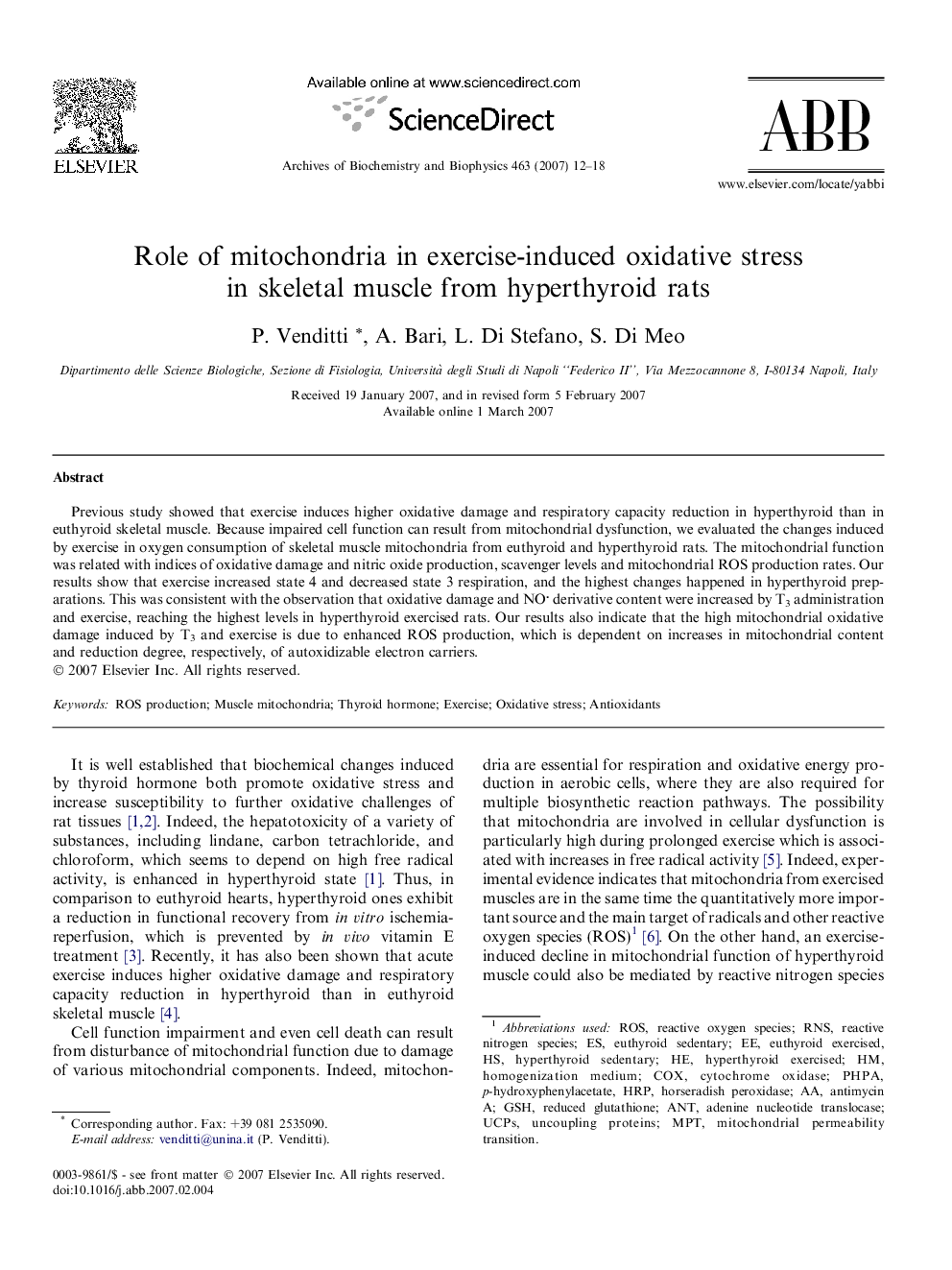| Article ID | Journal | Published Year | Pages | File Type |
|---|---|---|---|---|
| 1926919 | Archives of Biochemistry and Biophysics | 2007 | 7 Pages |
Previous study showed that exercise induces higher oxidative damage and respiratory capacity reduction in hyperthyroid than in euthyroid skeletal muscle. Because impaired cell function can result from mitochondrial dysfunction, we evaluated the changes induced by exercise in oxygen consumption of skeletal muscle mitochondria from euthyroid and hyperthyroid rats. The mitochondrial function was related with indices of oxidative damage and nitric oxide production, scavenger levels and mitochondrial ROS production rates. Our results show that exercise increased state 4 and decreased state 3 respiration, and the highest changes happened in hyperthyroid preparations. This was consistent with the observation that oxidative damage and NO derivative content were increased by T3 administration and exercise, reaching the highest levels in hyperthyroid exercised rats. Our results also indicate that the high mitochondrial oxidative damage induced by T3 and exercise is due to enhanced ROS production, which is dependent on increases in mitochondrial content and reduction degree, respectively, of autoxidizable electron carriers.
